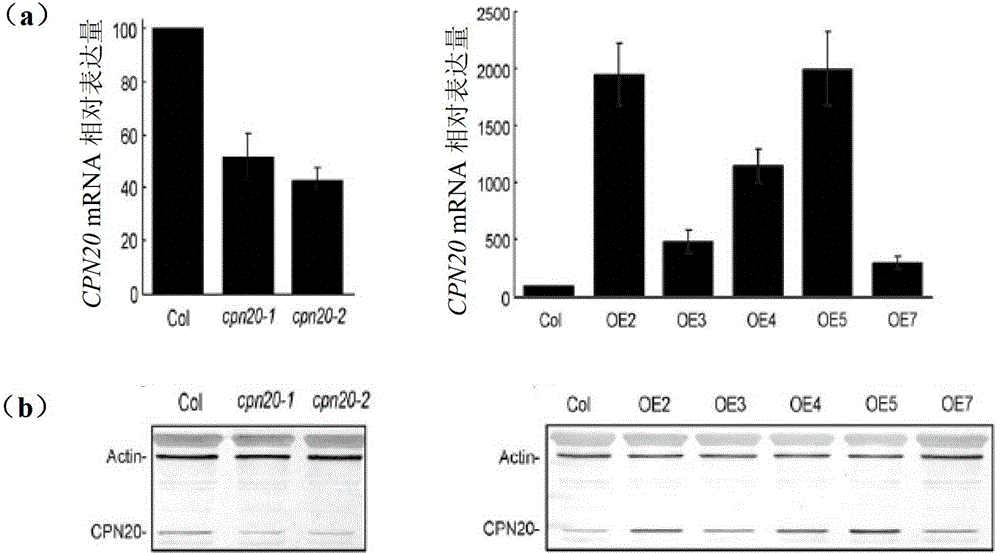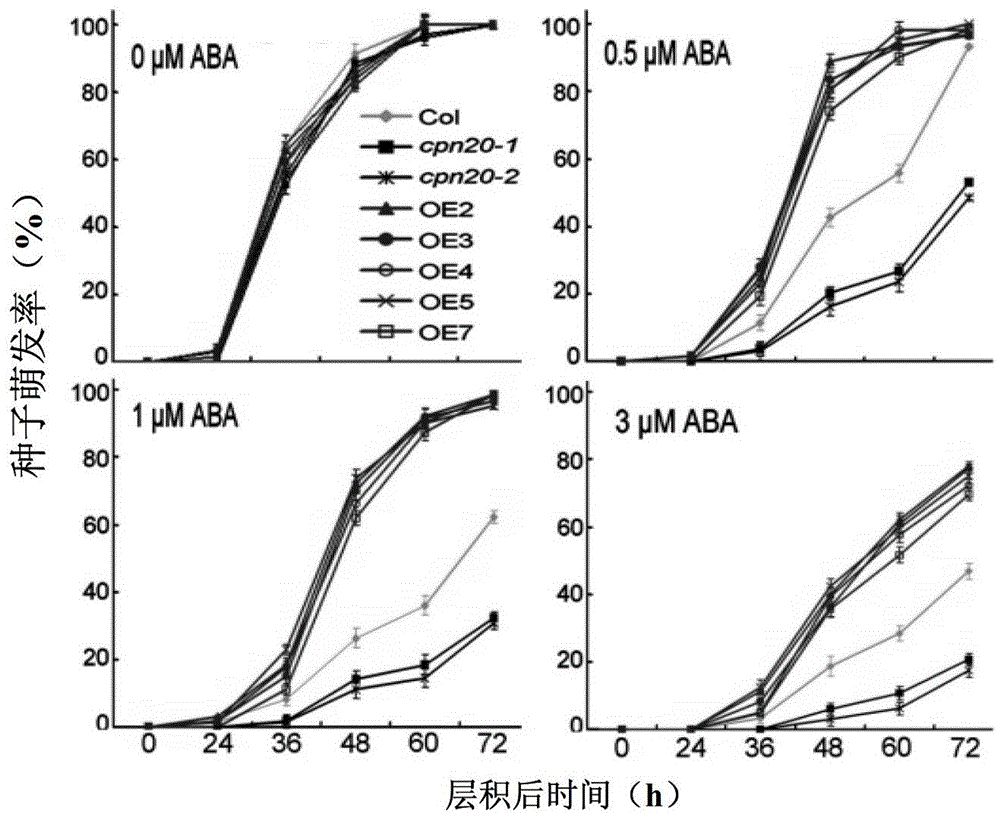Application of CPN20 protein and coding gene thereof in regulating ABA (abscisic acid) tolerance of plant
A coding gene and tolerance technology, applied in the application field of CPN20 protein and its coding gene in regulating plant tolerance to ABA, to achieve the effect of improving genetic characteristics
- Summary
- Abstract
- Description
- Claims
- Application Information
AI Technical Summary
Problems solved by technology
Method used
Image
Examples
Embodiment 1
[0052] Embodiment 1, the acquisition and identification of CPN20 transgenic plants
[0053] The CPN20 gene involved in this example is derived from Arabidopsis thaliana, and its sequence in the Arabidopsis genome is shown as sequence 1 in the sequence table. Sequence 1 consists of 1813 nucleotides, of which the 80th -339, 519-788, 971-1069, 1229-1315, 1393-1514 are 5 intron sequences; the cDNA sequence of the CPN20 gene is shown in sequence 2 in the sequence listing , Sequence 2 consists of 975 nucleotides, of which the 87th-848th is the coding sequence (ORF); both Sequence 1 and Sequence 2 encode the protein (CPN20 protein) shown in Sequence 3 in the sequence list, and Sequence 3 consists of 253 Composition of amino acid residues.
[0054] 1. Construction of recombinant expression vector pCAMBIA-1300-221-CPN20
[0055] Total RNA was extracted from Arabidopsis wild-type (Col-0 ecotype), and cDNA was obtained after reverse transcription. Using the obtained cDNA as a template...
Embodiment 2
[0120] Embodiment 2, CPN20 transgenic plant tolerance analysis test to ABA
[0121] 1. Effect of ABA on seed germination of CPN20 genetic materials
[0122] Arabidopsis wild type (Col-0 ecotype), two T-DNA insertion mutants cpn20-1 and cpn20-2 with reduced expression of CPN20 gene, T3 generation homozygous CPN20 transgenic line OE2 obtained in Example 1, OE3, OE4, OE5 and OE7, and the control plants obtained in Example 1 transformed into the pCAMBIA-1300-221 empty vector were used as experimental materials. The seeds of each experimental material were sown on MS medium containing different concentrations of ABA (0 μM, 0.5 μM, 1 μM and 3 μM) (80-100 seeds were sown for each experimental material). After low-temperature stratification at 4°C for 3 days, they were transferred to a light incubator. Record the germination number of seeds between 24h and 72h after stratification, record once every 12h, and make statistics on the results. The experiment was repeated 5 times, and t...
PUM
 Login to View More
Login to View More Abstract
Description
Claims
Application Information
 Login to View More
Login to View More - R&D
- Intellectual Property
- Life Sciences
- Materials
- Tech Scout
- Unparalleled Data Quality
- Higher Quality Content
- 60% Fewer Hallucinations
Browse by: Latest US Patents, China's latest patents, Technical Efficacy Thesaurus, Application Domain, Technology Topic, Popular Technical Reports.
© 2025 PatSnap. All rights reserved.Legal|Privacy policy|Modern Slavery Act Transparency Statement|Sitemap|About US| Contact US: help@patsnap.com



